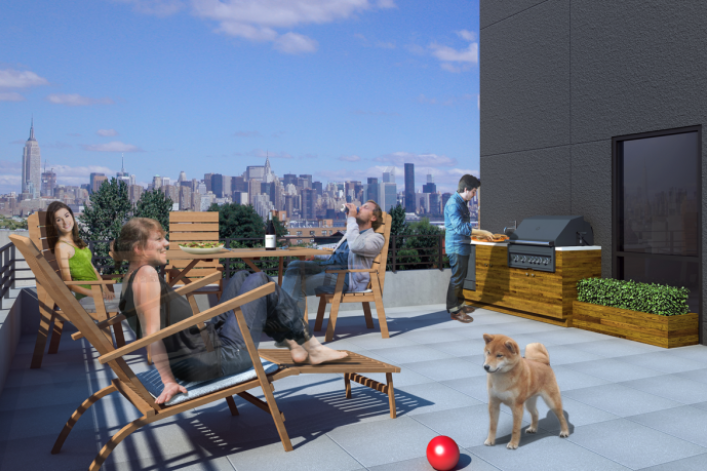Renderings demystified: Why NYC developers pack their ads with "ghost" residents

If you're anything like us, when you see renderings for new developments, your first thoughts are usually along the lines of "wow, that's expensive," followed by, "why are all the people in these pictures see-through?"
Images of attractive, translucent faux-residents are a staple of advertising materials for under-construction buildings. But we'd always assumed that developers wanted potential buyers or renters to envision themselves kicking back on the roofdeck or jogging on the treadmill—the same way that regular apartment sellers stage their homes to appeal to the widest group of buyers, creating a space that's homey but impersonal.
Turns out, though, the logic is much simpler: "The 'ghosted' look may have its origins in the 'long exposure' treatment you see in a lot of architectural photography," explains Brian Lindvall, a partner and director at DBOX, a design agency that has worked on renderings for new developments like 432 Park Avenue and New York by Gehry (as pictured below). "But in most cases, it's probably much more pragmatic; the people are semi-transparent so the viewer can see parts of the design that would otherwise be blocked."

A rendering for New York by Gehry features the founder of DBOX, which designed the ad.
In other words, developers just want you to be able to see the building, not necessarily assume that it's haunted. "Architects face a dilemma with their renderings," Lindvall adds. "They want to be sure scale is represented in their images, but they may not have the time—or inclination—to include people properly."

This Ocean Hill rendering takes "ghost" residents to a whole new level (image via Brownstoner)
Lindvall also notes that DBOX doesn't use "transparent figures" in its renderings, and if they are going for a more realistic look, undertake an arduous process that involves photographing models on a green screen in lighting exactly like that in the rendered scene, then integrating the photos into the rendering after the fact. "Making that combination of rendering and reality is extremely detailed work," he says, but adds, "In our experience, populating a scene with individuals and their effects makes a rendering feel much warmer and more relatable."
So for your next apartment hunt, choose your poison: an empty apartment, an apartment full of models, an apartment full of ghost-models, or terrible, terrible realism.
Related:
Staging snafus that can hinder a sale
Why you may want to buy (or not) in a condo when it's nearly sold-out























